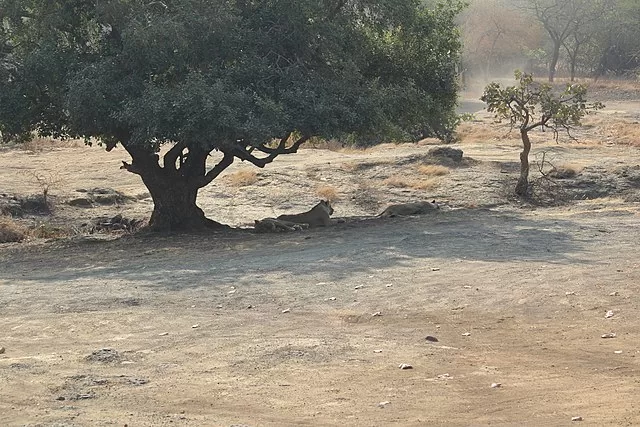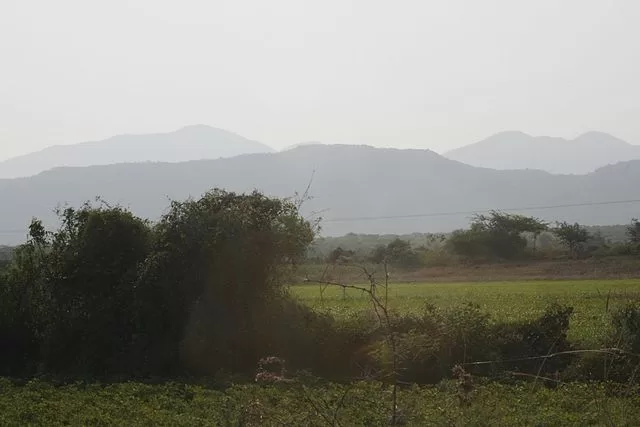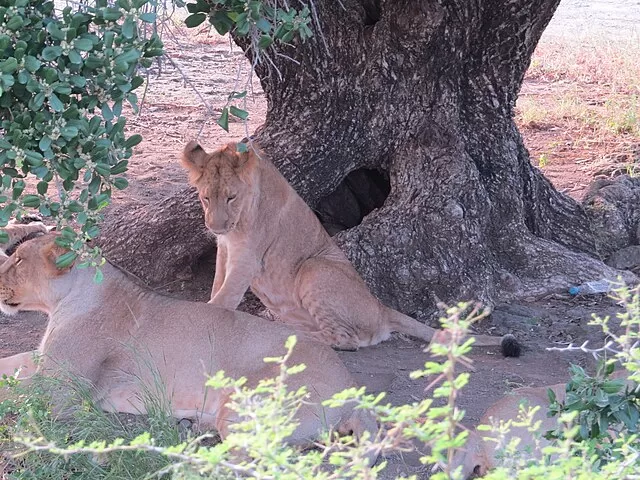Have you ever dreamed of venturing into a realm where the majestic roar of the Asiatic lions fills the air, where lush vegetation thrives alongside diverse wildlife, and where nature’s beauty and biodiversity are at their finest? Welcome to Gir Forest National Park, a haven for wildlife enthusiasts, nature lovers, and adventurers seeking a glimpse into the wild heart of India.

Unveiling the Jewel of Gujarat
Nestled in the western state of Gujarat, Gir Forest National Park stands as a testament to India’s commitment to preserving its rich biodiversity. Spanning over 1,400 square kilometers, this pristine wilderness is renowned for being the last abode of the critically endangered Asiatic lions.
A Legacy of Conservation
Established in 1965, Gir Forest National Park has a storied history of conservation. Its creation marked a turning point in the efforts to safeguard the dwindling lion population, and it has since become a model for wildlife conservation in the country.
A Sanctuary of Diversity

Biodiversity Hotspot: Flora and Fauna
The park’s diverse ecosystems encompass deciduous forests, grasslands, and wetlands, nurturing an incredible array of flora and fauna. From majestic flowering trees to elusive wildcats, Gir is a living tapestry of life.
Rivers and Waterholes: Sustaining Life
Gir’s lifelines are its rivers and waterholes, which sustain its inhabitants during scorching summers. These oases attract a symphony of wildlife, creating opportunities for awe-inspiring wildlife encounters.
Majestic Asiatic Lions: Icons of Gir
Lion Behavior and Social Structure
The Asiatic lions of Gir exhibit captivating social dynamics and behavior. From their cooperative hunting to nurturing the young, these apex predators offer a mesmerizing glimpse into the wild.
Conservation Efforts and Success Stories

Decades of conservation work have borne fruit, with the lion population showing steady growth. The collaborative efforts of government agencies, NGOs, and local communities have been pivotal in this success.
Beyond the Lions: A Melting Pot of Wildlife
Leopards, Hyenas, and More: Carnivores of Gir
While the lions take center stage, Gir is also home to a diverse array of carnivores, including leopards, hyenas, and jackals. Each species plays a crucial role in maintaining the park’s ecological balance.
Feathered Residents: Avian Wonders
Gir’s avian residents include vibrant species like the Indian Pitta and the endangered white-backed vulture. Birdwatchers and ornithologists are in for a treat as they explore the park’s feathered treasures.
Scales and Shells: Reptilian Realm
The reptiles of Gir are equally captivating, from the slithering Indian rock python to the hard-shelled star tortoise. These creatures showcase the park’s remarkable biodiversity.
Ecotourism at its Best: Exploring Gir Safaris
Safari Zones and Exciting Encounters
Gir offers a range of safari zones, each providing a unique window into the park’s wilderness. Whether you choose a jeep or bus safari, prepare for enchanting encounters with the denizens of Gir.
Responsible Tourism: Balancing Conservation and Recreation
Tourism plays a vital role in Gir’s conservation efforts, generating funds for park management. Responsible tourism practices ensure that visitors can revel in the park’s beauty without harming its delicate balance.
Conservation Challenges
Human-Wildlife Conflict and Mitigation
The growing interface between humans and wildlife presents challenges. Gir’s management employs strategies to minimize conflict and ensure the safety of both visitors and animals.
Habitat Protection and Restoration
Protecting Gir’s diverse habitats is paramount. Efforts are underway to restore and expand these environments, providing a secure future for the park’s inhabitants.
Gir: A Living Laboratory for Researchers

Scientific Studies and Discoveries
Gir’s unique ecosystem intrigues researchers from around the world. Studying its flora, fauna, and ecological processes contributes valuable insights to wildlife conservation.
Contributions to Wildlife Management
The knowledge gained from Gir’s research efforts informs wildlife management strategies globally, aiding in the conservation of endangered species beyond the park’s borders.
Gir in Indigenous Lore
Gir’s Place in Local Traditions
For the indigenous communities surrounding Gir, the park is woven into their cultural fabric. It holds spiritual significance and supports sustainable livelihoods.
Sustainable Livelihoods and Community Engagement
Conservation initiatives have created opportunities for local communities, fostering a sense of ownership and responsibility for Gir’s well-being.
Ensuring Gir’s Legacy
Collaborative Conservation Initiatives
The road ahead involves continued collaboration between government bodies, conservation organizations, and communities. Together, they strive to ensure Gir’s legacy for generations to come.
Adapting to Environmental Changes

As environmental challenges loom, Gir’s adaptability will be tested. Efforts to mitigate climate change and other threats are essential to maintaining the park’s vitality.
Conclusion
Gir Forest National Park beckons all who seek an immersive encounter with untamed nature. Its captivating beauty, awe-inspiring wildlife, and conservation successes make it a symbol of hope and resilience.
FAQs
- Can I see lions in their natural habitat during a safari?
Absolutely! Gir offers excellent opportunities to witness Asiatic lions in their natural environment. - How can I contribute to Gir’s conservation efforts?
You can contribute by supporting responsible tourism, spreading awareness, and contributing to relevant conservation organizations. - Are there any restrictions on photography during the safari?
While photography is allowed, it’s important to follow guidelines that prioritize the well-being of the animals and their habitat. - What is the best time of year to visit Gir Forest National Park?
The park is open from October to June, with the cooler months of December to March being ideal for visits. - Are there accommodations available within the park?
Yes, Gir offers various accommodation options, including forest lodges, resorts, and guesthouses, ensuring a comfortable stay amidst nature’s wonders.

